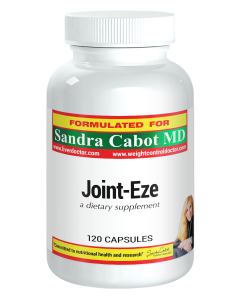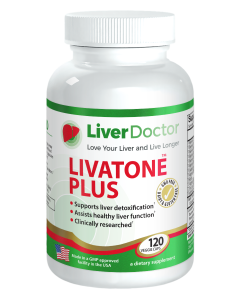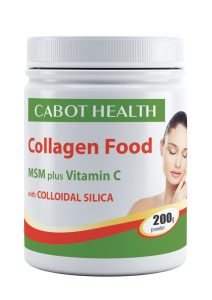

Could A Natural Sulfur Supplement Help Your Arthritis?
Did you know that MSM (methyl sulfonyl methane) is a natural sulfur compound that can help to decrease inflammation and reduce joint pain?
MSM is a type of sulfur compound found in some fresh fruits and vegetables. It is particularly concentrated in vegetables in the cruciferous family such as broccoli, Brussels sprouts, cabbage and cauliflower. You can smell the sulfur in these vegetables while they’re cooking.
Sulfur is also present in every cell of the human body. Connective tissue, hair, skin and nails contain a lot of sulfur. If you want to have healthy and radiant skin and hair, and strong nails, it is very important to have sufficient sulfur in your diet.
Sulfur has a particular affinity for the joints of your body and some research has shown it can reduce the pain and swelling of arthritis. Your liver also utilises sulfur bearing amino acids in the process of detoxification, therefore a healthy liver is heavily reliant on sulfur.
Sulfur and connective tissue
Sulfur forms a part of some of the amino acids in your body and is involved in protein synthesis, as well as numerous enzyme reactions. Sulfur is required for the production of collagen, which is a substance that forms connective tissues, skin, the digestive tract and artery walls. Sulfur is also a component of keratin, giving strength to hair, skin and nails.
Sulfur and arthritis
Some research has shown that people with arthritis may benefit from taking supplemental MSM. It can be effective for osteoarthritis, rheumatoid and psoriatic arthritis. You are probably aware that sulfur baths have historically provided relief from painful joint disease in a great number of people. Most of us don’t have access to a sulfur bath and that’s where MSM can be handy.
A clinical trial published in the journal Osteoarthritis and Cartilage in 2006 showed that 3 grams of MSM taken twice a day for 12 weeks resulted in a substantial decrease in arthritic knee pain. Another study performed in 2004 in India assessed a combination of MSM and glucosamine on 118 patients with mild to moderate osteoarthritis. The study ran for six months. The results showed a significant improvement in pain and swelling and range of movement of the affected joints. Results were best when the participants took a combination of glucosamine and MSM.
For joint pain I also strongly recommend a diet that is free of gluten, dairy products and sugar, as these foods can significantly raise inflammation in the body. The eating plan in my book Healing Autoimmune Disease: A Plan to Help your Immune System and Reduce Inflammation is free of all those foods and may help reduce inflammation and pain in your body.
Sulfur and detoxification
The amino acids taurine and cysteine are both referred to as sulfur-bearing amino acids because sulfur forms an integral component of their structure. Your liver requires these amino acids for phase 2 detoxification, to help purify your bloodstream of the toxins you are exposed to in everyday living. Taurine is also required for the manufacture of bile, and in this way aids the excretion of cholesterol and excess fats from the body via the gallbladder. This is the reason I have included these amino acids in my liver tonic Livatone Plus.
Sulfur is often an overlooked nutrient, but there are many important roles it plays in your body. If your diet is lacking sulfur rich foods, you may experience significant benefits from a natural sulfur supplement in the form of MSM. The vast majority of people with an allergy to sulfur based drugs can safely tolerate MSM because it is a natural substance, however it is best to be guided by your own doctor.
The above statements have not been evaluated by the FDA and are not intended to diagnose, treat or cure any disease.
References:
Osteoarthritis and Cartilage; Efficacy of Methylsulfonylmethane in Osteoarthritis Pain of the Knee: Pilot Clinical Trial; L.S. Kim; March 2006
Clinical Drug Investigation"; Randomised, Double-Blind, Parallel, Placebo-Controlled Study of Oral Glucosamine, Methylsulfonylmethane and Combination in Osteoarthritis; P.R. Usha and M.U. Naidu; 2004
Know someone who might benefit from this article? Share it!
7 Comments
Need Help?
1-888-75-LIVER
Monday to Friday, 9:00 am to 5:00 pm MST
100%
Satisfaction Guaranteed
If it’s faulty or wrongly described, we’ll replace it.














Recent research has cast concerns about the use of glucosamine products because of the potential for liver concerns, so dosage is to be kept to the lowest possible for relief of symptoms. Chondroitin has a similar structure so it is also best used in lowest possible doses as well.
Many people with arthritis have significant co-morbidities, which may also induce liver disease.
The article was focusing on the joint healing properties of the high sulfur compound MSM. It contains no glucosamine or chondroitin and MSM is a very beneficial compound for the liver to supply it with additional sulfur for effective detoxification.
Kind regards
Victoria
We are not able to give you any timeline on your rotten egg burps, and they may be an indication that you are low in stomach acid, especially if you do tend to burp a lot anyway.
As your liver accepts and uses more of the sulfur you are obtaining by taking MSM + Vitamin C, we would expect your breath to sweeten.
To lessen the amount of sulfur dioxide, we recommend you halve the dose you are taking and have more doses throughout each day, to ensure you still receive a therapeutic dose of both MSM and Vitamin C.
Kind Regards,
Victoria Taylor,
Naturopath for Liverdoctor.com
has really peaked my interest. I will take a
note of your website and keep checking for new information about once a week.
I subscribed to your Feed too.